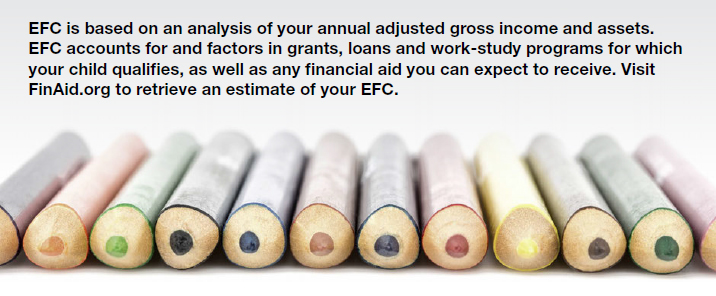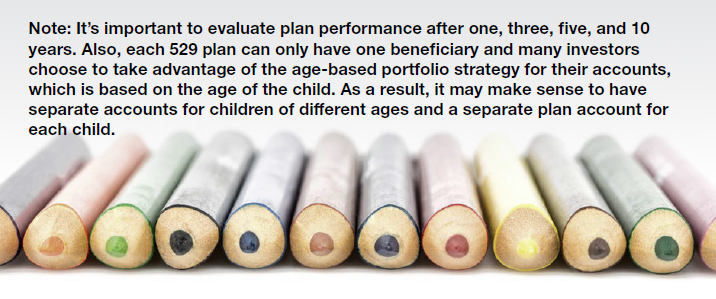INVEST IN THE
MINDS OF TOMORROW


Education without the Financial Burden
According to the College Board, the average cost for tuition and fees at four-year public institutions has increased almost 51% over the last 10 years (after adjusting for inflation) and these costs are expected to continue to rise.1
In fact, inflation on the cost of college has outpaced general inflation for the past 17 years. In addition, roughly 90% of college students do not receive merit-based financial aid that does not need to be repaid, according to FinAid.org.2
We understand how meaningful graduation day is to your family, and our Advisors are prepared to help you select the college savings options that will bring your child's or grandchild's college dreams to fruition.
While there are a number of investment vehicles to help you save for this milestone, it's important to compare your options, determine how much you need to save and choose a vehicle that meets your specific needs.
Education Savings Options
As you review plans, think about your investment priorities, account ownership preferences and timeline. Your options may include 529 College Savings Plans, Custodial accounts and Coverdell Education Savings Accounts.
We believe your investment account should offer the most opportunity to save for your child's or grandchild's education. It can be difficult to know which college savings option is right for you, so we've defined them at a glance. Read on to start paving the road to college for your child or grandchild and allow your HD Vest Advisor to assist you in determining which option is the most appropriate.

529 College Savings Plans
A 529 plan is a college savings plan sponsored by a state or state agency. Assets from the plan can be used for tuition, books and other education-related expenses. U.S. residents age 18 or older are eligible to invest in most state plans.
Why a 529 Plan?
People of all income levels can open a 529 plan. In addition, the beneficiary of a 529 can even be the same person who sets up the account. Grandparents, relatives and non-relatives can contribute to the account. 529 plan assets also have a minimal effect on federal financial aid eligibility for college tuition because they are considered assets of the parents and not the child when calculating the Expected Family Contribution (EFC).
Additional benefits:
- Any earnings grow tax-deferred.
- Qualified distributions are federal income tax-free.
- The account owner is eligible for gift and estate tax benefits.
- You can opt to change the beneficiary or withdraw the money as a non-qualified distribution if the beneficiary decides not to attend college. The earnings portion of non-qualified distributions are subject to federal penalty tax; the principal is not.
- If your child or grandchild earns a scholarship, you can withdraw the amount of the scholarship award from your 529 plan account penalty-free. However, federal and state income taxes apply.

Choosing the 529 Plan That Is Right for You
There are a number of 529 plan options to choose from. You will need to consider tax advantages, plan performance and plan management to choose the best option for you and your family.
Considerations
The following questions should be considered when narrowing down a 529 plan:
- What are the in-state tax benefits?
- What are my investment options?
- Is there an age-based portfolio option?
- What are the fees and expenses, including asset-based, low-balance, account maintenance, and non-resident fees?


Custodial Accounts
The Uniform Gifts to Minors Act (UGMA) and the Uniform Transfers to Minors Act (UTMA) are accounts that are set up on behalf of a minor. Assets are turned over to the beneficiary's control between age 18 and 21, and at that time, they can use the funds however they choose, whether for college tuition or a new car.
Why a UGMA/UTMA account?
A UGMA/UTMA account may be ideal for parents or grandparents who want to take advantage of the "kiddie" tax rate3 and are not worried about the assets going to the child if not used expressly for college.
Additional benefits:
- At least part of the investment earnings may be exempt from federal income tax.
- Some or all of non-exempt investment earnings may be taxed at a lower child's rate on an annual basis.
- The account holder is eligible for gift and estate tax benefits.
- The custodial account can be established in a child's name.

Considerations
UGMA/UTMA accounts tend to have a greater effect on federal financial aid eligibility/EFC because the assets are deemed the beneficiary's, not the parent's.
Note: UGMA and UTMA assets can be transferred into a 529 plan account after they are liquidated and all applicable taxes have been paid. After liquidation, you can invest the cash in a UGMA/UTMA (Custodial) 529 plan account, which will be subject to the rules for both types of accounts, including applicable UGMA/UTMA state statutes. Also, you cannot change the beneficiary of an UGMA/UTMA 529 plan account.
Coverdell Education Savings Accounts
A Coverdell Education Savings Account is a custodial account that allows you to save up to $2,000 a year for K-12 and post-secondary education expenses. Coverdell accounts may be established for any child under age 18.
Why a Coverdell account?
This account is more flexible when it comes to expense eligibility. For example, Coverdell savings can cover a computer cost for a K-12 student. In contrast, computers are only eligible in a 529 plan if your child is in college.
Additional benefits:
- Any earnings grow tax-deferred.
- Distributions are free of federal income tax when used for qualified expenses.
- The beneficiary can be changed.
- Qualified withdrawals include K-12 expenses in addition to post-secondary education expenses.
Considerations
Contributions to Coverdell Education Savings Accounts are not deductible. Also, unlike 529s, Coverdell assets are not revocable. The account must be established for the sole benefit of the child. In fact, the account custodian is the bank or other financial institution you use to open the account—not you. Coverdell Education Savings Accounts may be less appropriate for older students since the money must be distributed by age 30 with the exception of special needs students.
To see how each of these plans really sizes up, see the side-by-side comparison chart on the following page. Please note that the chart offers an at-a-glance overview and is not black and white. Your HD Vest Advisor can clarify any gray areas or address any questions you may have.
| 529 College Savings Plans | Custodial Accounts | Coverdell Education Savings Accounts | |
|---|---|---|---|
| Ownership/Control | Contributor | Custodian until child reaches age of majority | Contributor |
| Investment Choices | Typically, plans provide several investment options. | No restrictions | No restrictions |
| Age Limits | None | Minor child | Except for special needs children, no contributions can be made after a child reaches age 18, and withdrawals must be made before beneficiary reaches age 30. |
| Expenses Covered Besides Tuition and Fees | Qualified education expenses for post-secondary education | No restrictions on types of expenses | Qualified elementary and secondary education expenses or qualified higher education expenses |
| Contribution Limit | Varies from plan to plan. Majority of plans permit total contributions in excess of $250,000 per beneficiary. | No limit | Contributor: $2,000 per beneficiary per year. Beneficiary: $2,000, does not matter how many education savings accounts are set up. |
| Federal Tax Advantages | Earnings grow tax-deferred and are tax-free if used for qualified education expenses. | $950 in earnings are tax-free. | Earnings grow tax-deferred and are tax-free if used for qualified education expenses. |
| State Tax Advantages | Varies from state to state, but some states provide tax deduction for contributions, tax-free earnings growth and tax-free withdrawals for qualified education expenses. | None | None |
| Income Phase-Out | None | None | Single filers: $95,000 – $110,000 Joint filers: $190,000 – $220,000 |
| Penalties for Non-Qualified Withdrawals | Earnings are taxed as ordinary income and may be subject to a 10% penalty. | None | Withdrawals that exceed the beneficiary's education expenses for the year may be taxable. |
Filing information as of 2012. See IRS Publication 970 for 2013 updates
Chart sourced from: http://www.finra.org/Investors/SmartInvesting/SmartSavingforCollege/P124117
Seek Experienced Advice
Your HD Vest Advisor knows the full scope of your financial picture, which makes me equipped to address your college savings needs holistically and recommend a plan that considers your complete financial picture. If you already have a strategy in place, your Advisor can do a cost/benefit analysis to ensure it’s the best fit for you and your child or grandchild. In addition, our Advisors are backed by HD Vest specialists who provide technical support and specialized training to ensure you are paired with the best solutions possible.




